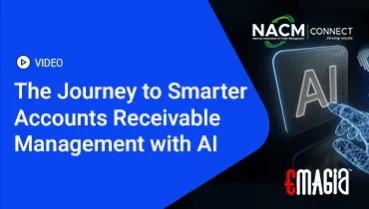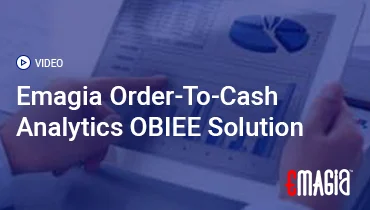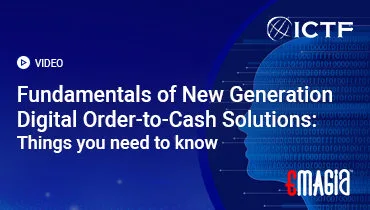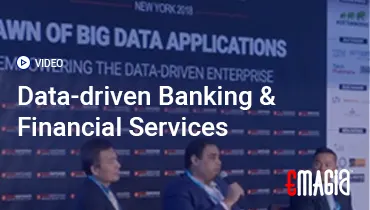In the dynamic world of business, timely payments are the lifeblood of cash flow. Yet, despite clear invoicing and established payment terms, overdue accounts are an almost inevitable reality for any company extending credit. Manually chasing these late payments—sending reminders, making phone calls, and tracking responses—is a tedious, time-consuming, and often frustrating task for Accounts Receivable (AR) teams. This reactive, manual approach not only drains valuable resources but also directly hinders a company’s financial agility and profitability.
Imagine a system that proactively reminds customers about upcoming payments, politely follows up on overdue invoices, and intelligently escalates communication based on customer behavior. This is the promise of Dunning Automation, a transformative approach to collections that leverages technology to streamline and optimize the entire process of chasing outstanding debts. It’s about moving from a reactive, labor-intensive chase to a proactive, intelligent, and customer-centric communication strategy.
So, what exactly is `dunning`, and how does automation revolutionize this critical Accounts Receivable function? This comprehensive guide will delve deep into the world of intelligent collections, exploring the precise `dunning meaning`, its core benefits, key features, and strategic implementation. Get ready to discover how to accelerate your cash flow, reduce operational costs, and enhance customer relationships through a sophisticated, automated approach to managing overdue payments.
Understanding Dunning: The Core of Collections Communication
Before diving into automation, it’s essential to define the traditional concept of ‘dunning’ and its role in Accounts Receivable.
Dunning Meaning: Systematized Debt Collection Communication
`Dunning` refers to the systematic process of communicating with customers to remind them of overdue payments and to encourage them to settle their outstanding debts. The term itself might sound old-fashioned or even aggressive, but in modern business, it encompasses a series of polite, professional communications designed to facilitate payment. The meaning of dunning is essentially persistent, structured communication regarding outstanding invoices.
It’s an integral part of the overall collections process, aiming to recover monies owed without alienating valuable customers. The definition of dunning emphasizes its methodical nature, ensuring no overdue account is overlooked.
The Traditional Dunning Process: Manual and Repetitive
Traditionally, the dunning process involves a series of manual steps:
- Identifying Overdue Invoices: An AR analyst reviews aging reports to see which invoices are past their due date.
- Crafting Communications: Writing and sending individual dunning emails, letters, or making phone calls.
- Tracking Responses: Manually logging which reminders were sent, when, and any customer responses.
- Escalation: Deciding when to escalate the communication (e.g., from a polite reminder to a firmer request or a phone call).
This reactive and labor-intensive process is prone to human error, inconsistency, and significant delays, creating a strong case for modern `dunning solutions`.
Why Manual Dunning is Inefficient for Modern Businesses
The manual dunning procedure faces several significant challenges in today’s fast-paced environment:
- Time-Consuming: AR teams spend countless hours identifying, tracking, and communicating with late-paying customers.
- Error-Prone: Manual tracking of communication, incorrect contact details, or missed follow-ups can lead to inefficiencies.
- Inconsistent Messaging: Different collectors may use varied tones or messages, leading to an inconsistent customer experience.
- Scalability Issues: As a business grows, the volume of overdue invoices can quickly overwhelm a manual team.
- Delayed Cash Flow: Slow and inconsistent follow-up directly impacts Days Sales Outstanding (DSO) and cash flow.
These inefficiencies highlight why a traditional `dunning system` is no longer viable for optimal performance.
What is Dunning Automation? Revolutionizing Collections
The answer to the inefficiencies of manual collections lies in harnessing technology to create a smart, proactive `dunning system`.
Defining Automated Dunning: Smart, Proactive Collections
Dunning Automation refers to the use of software and intelligent algorithms to streamline, schedule, and execute the process of communicating with customers about overdue payments, with minimal human intervention. It involves setting up predefined workflows that automatically trigger reminders, adjust communication strategies, and escalate actions based on pre-set rules and customer behavior. This shifts the process from reactive to proactive, ensuring consistent and timely follow-up. This is the essence of an `automated dunning management software`.
The Role of AI and Machine Learning in Intelligent Dunning
Modern Dunning Automation solutions go beyond simple scheduled reminders. They leverage Artificial Intelligence (AI) and Machine Learning (ML) to make the dunning process truly intelligent:
- Predictive Analytics: AI can analyze historical payment data, customer behavior, and even external economic indicators to predict payment likelihood and identify accounts at risk of default *before* they become severely delinquent.
- Personalized Communication: ML can segment customers and recommend the most effective communication channels (email, SMS, phone call) and message content for each segment, optimizing engagement. This ensures the `dunning message` resonates.
- Dynamic Workflows: AI can adapt the dunning strategy in real-time based on customer responses (or lack thereof), prior payment history, and predicted risk, leading to more agile collections.
This infusion of intelligence transforms a basic `dunning system` into a powerful cash flow acceleration engine, making `dunning optimization` a reality.
Evolution from Basic Reminders to Intelligent Communication Journeys
The progression of `dunning solutions` reflects a move from generic `dunning emails` to highly tailored communication journeys:
- Basic: Simple, generic email reminders sent on fixed schedules (e.g., 7 days past due).
- Advanced: Multi-channel communication (email, SMS, in-app notifications), personalized content based on customer history, and intelligent escalation paths.
- Intelligent (AI-driven): Predictive risk scoring, dynamic segmentation, adaptive communication sequences, and proactive outreach before due dates. This represents true `automated dunning` capabilities.
This evolution ensures that `what does dunning mean` for your business is efficient and effective.
Key Features of Leading Dunning Automation Software
Effective `dunning software` provides a comprehensive suite of features designed to automate and optimize every aspect of the collections communication process, from initial reminder to final resolution.
A. Customizable Communication Workflows and Sequences
- Rule-Based Triggers: Ability to set up automated reminders based on specific criteria (e.g., X days before due, Y days past due).
- Multi-Channel Outreach: Support for various communication channels, including `dunning emails`, SMS, in-app notifications, and even automated phone call prompts.
- Configurable Escalation Paths: Defining a clear escalation matrix, moving from polite reminders to firmer requests or involving collection specialists as invoices age.
- Personalized Templates: Pre-designed, customizable `dunning email` templates with dynamic fields for customer name, invoice details, and outstanding `dunning billing` amounts.
B. Intelligent Customer Segmentation and Risk Scoring
- AI-Driven Segmentation: Automatically grouping customers based on payment behavior, credit risk, industry, or invoice value to apply tailored dunning strategies.
- Predictive Analytics for Payment Likelihood: Using ML to forecast which customers are most likely to pay on time, or which require immediate attention, enabling `dunning optimization`.
- Credit Risk Integration: Linking dunning strategies to real-time credit risk assessments to adjust communication intensity based on changing risk profiles.
C. Real-time Visibility and Analytics
- Interactive Dashboards: Real-time visibility into the status of all outstanding invoices, collection activities, and key performance indicators (KPIs) like DSO, collection effectiveness, and recovery rates.
- Performance Tracking: Monitoring the effectiveness of different dunning strategies (e.g., which email templates yield the best results, which channels are most effective).
- Audit Trail: Maintaining a comprehensive record of all communications sent and customer interactions for compliance and accountability.
D. Self-Service Portals and Payment Options
- Customer Payment Portals: Providing secure online portals where customers can view their outstanding invoices, payment history, and make payments directly. This enhances the customer experience and reduces inbound queries about `dunning billing`.
- Integrated Payment Gateways: Offering various online payment options (credit card, ACH, digital wallets) directly through the portal or `dunning message` links, simplifying the payment process for customers.
These features define a robust `dunning management system` designed for optimal collections.
Transformative Benefits of Embracing Dunning Automation
The strategic implementation of Dunning Automation offers profound advantages that extend across the entire financial operation of a business.
1. Accelerated Cash Flow and Reduced DSO
By ensuring consistent, timely, and effective communication, `automated dunning` significantly speeds up the collection of overdue payments. This directly improves Days Sales Outstanding (DSO) and enhances overall cash flow predictability, providing the liquidity needed for operations and growth.
2. Significant Time and Cost Savings
Automating repetitive tasks like sending reminders and tracking follow-ups frees up valuable time for AR analysts. This reduces manual labor costs, allowing teams to manage a larger volume of invoices without increasing headcount, or focus on more complex, high-value collection activities. This is a core benefit of `dunning solutions`.
3. Enhanced Collection Effectiveness and Recovery Rates
Intelligent segmentation and personalized communication lead to more effective engagement with customers, increasing the likelihood of payment. Predictive analytics allow AR teams to prioritize high-risk accounts, ensuring resources are directed where they can have the most impact on recovery rates. This defines `dunning optimization` in practice.
4. Improved Customer Relationships and Experience
Proactive, polite, and consistent reminders (before and immediately after due dates) help customers avoid late fees and maintain a positive payment history. Automated, tailored communication feels less intrusive than aggressive manual calls, fostering trust and preserving long-term customer relationships. A clear `dunning message` helps.
5. Greater Compliance and Audit Readiness
`Automated dunning management software` maintains a comprehensive and immutable audit trail of all communications and actions taken. This ensures compliance with debt collection regulations and internal policies, simplifying `AR audit` processes and providing clear documentation for financial reporting.
6. Scalability for Growing Businesses (Especially for `Dunning SaaS`)
For rapidly growing businesses, particularly those with subscription models (where `dunning subscription` is crucial) or high transaction volumes, `dunning automation` provides the scalability to manage increasing numbers of overdue accounts without proportional increases in AR staff. This is a key advantage of `dunning SaaS` platforms.
Implementing Dunning Automation: A Roadmap for Success
Transitioning to an `automated dunning management software` requires careful planning and strategic execution to maximize benefits and ensure seamless integration.
1. Assess Your Current Collections Process and Goals
Begin by thoroughly analyzing your existing manual dunning procedure. Identify bottlenecks, time spent on communication, common reasons for late payments, and areas of inefficiency. Define clear, measurable objectives for automation, such as specific reductions in DSO or increases in collection rates. Understand `what is dunning process` currently like in your organization.
2. Select the Right `Dunning Software` or Solution
The market offers various `dunning solutions`. When choosing, consider:
- AI/ML Capabilities: Does it offer predictive analytics, smart segmentation, and personalized communication?
- Integration: Can it seamlessly connect with your existing ERP, accounting, and CRM systems?
- Customization: Can communication workflows, templates, and escalation rules be tailored to your specific needs?
- Channel Support: Does it support your preferred customer communication channels (email, SMS, portal)?
- Reporting and Analytics: Does it provide real-time dashboards and actionable insights for `dunning optimization`?
- Scalability: Can it grow with your business volume?
3. Data Integration and Cleanup
Ensure your customer and invoice data is clean, accurate, and accessible. Plan for robust, bi-directional integration between your `dunning software` and your core financial systems. This is critical for the automation to function effectively and for `dunning billing` accuracy.
4. Design and Configure Dunning Workflows
Based on your objectives and customer segments, design your automated dunning sequences. This involves:
- Defining trigger points (e.g., 5 days before due, 1 day past due, 15 days past due).
- Crafting personalized messages for each stage (`dunning emails`, `dunning message` for SMS).
- Setting escalation rules (e.g., after 3 reminders, assign to collector).
5. Pilot Program and Phased Rollout
Consider starting with a pilot program for a specific customer segment or invoice type. A phased rollout allows for testing, gathering feedback, and making adjustments before a full-scale implementation, minimizing disruption and ensuring successful user adoption.
6. Training, Change Management, and Continuous Optimization
Provide comprehensive training for your AR team, focusing on how their roles will evolve from manual processors to strategic managers of exceptions and customer relationships. Continuously monitor performance using the system’s analytics, gather feedback, and refine your dunning strategies for ongoing `dunning optimization`.
Emagia: Revolutionizing Your Dunning and Collections with AI-Powered Automation
In the relentless pursuit of accelerated cash flow and optimized working capital, manually managing overdue accounts is a significant bottleneck. Emagia’s AI-powered Order-to-Cash (O2C) platform is meticulously designed to transform your entire collections process, leveraging intelligent `Dunning Automation` to ensure consistent, effective, and customer-centric outreach.
Emagia centralizes and unifies all your critical Accounts Receivable data – from historical payment behavior and invoice aging to customer communication preferences and credit risk profiles. Our cutting-edge Artificial Intelligence and Machine Learning algorithms intelligently analyze this vast amount of information. This enables truly proactive and personalized `dunning solutions`. Our AI can predict payment likelihood, identify high-risk accounts *before* they become severely delinquent, and even recommend the optimal communication channel and message content for each customer. Imagine moving beyond generic `dunning emails` to highly tailored, empathetic `dunning messages` that resonate with individual customer segments.
By automating the entire collections communication workflow, Emagia ensures that the right reminder reaches the right customer at the right time, through their preferred channel. This includes automated pre-due reminders, escalating follow-ups, and the ability to seamlessly transition to human intervention for complex cases. This not only significantly reduces manual effort for your AR team but also drastically improves Days Sales Outstanding (DSO), accelerates cash flow, and enhances overall collection effectiveness. With Emagia, your business gains real-time visibility into your collections performance, empowering your finance team to optimize strategies, protect revenue, and build stronger, more predictable financial relationships.
Frequently Asked Questions (FAQs) About Dunning Automation
What is the fundamental `dunning meaning` in Accounts Receivable?
The fundamental `dunning meaning` in Accounts Receivable refers to the systematic process of communicating with customers to remind them of overdue payments and encourage them to settle their outstanding debts. It encompasses a series of polite, professional communications aimed at facilitating payment recovery.
How does `Dunning Automation` differ from traditional, manual `dunning process`?
`Dunning Automation` uses software and intelligent algorithms to automatically streamline, schedule, and execute collections communication with minimal human intervention. This contrasts with the manual `dunning process`, which is labor-intensive, reactive, error-prone, and relies on human analysts for each step of identifying, tracking, and communicating about overdue invoices.
What role do AI and Machine Learning play in advanced `dunning solutions`?
AI and Machine Learning play a crucial role in advanced `dunning solutions` by providing predictive analytics (forecasting payment likelihood), intelligent customer segmentation, and personalized communication strategies (recommending optimal channels and message content). This moves dunning beyond simple reminders to truly intelligent, adaptive outreach for `dunning optimization`.
What are the main benefits of implementing `automated dunning management software`?
The main benefits of implementing `automated dunning management software` include accelerated cash flow (reduced DSO), significant time and cost savings for AR teams, enhanced collection effectiveness, improved customer relationships, greater compliance, and scalability for managing high volumes of overdue accounts, especially for `dunning SaaS` models.
Can `dunning emails` be personalized with automation?
Yes, `dunning emails` can be highly personalized with automation. Advanced `dunning software` allows for dynamic fields that automatically pull in customer names, invoice details, outstanding amounts, and even tailor the message content based on customer segment or payment history, making the `dunning message` more effective.
What is the significance of `dunning subscription` in recurring revenue models?
`Dunning subscription` is highly significant in recurring revenue models (like SaaS) because it specifically addresses failed recurring payments (e.g., expired credit cards). Automated dunning in this context works to recover these failed payments proactively, preventing churn and ensuring consistent revenue streams.
How does `Dunning Automation` contribute to better customer relationships despite being about collections?
`Dunning Automation` contributes to better customer relationships by ensuring communications are consistent, polite, and timely (often sending pre-due reminders). Personalized and omnichannel outreach feels less intrusive than aggressive manual calls. This proactive and respectful approach helps customers avoid late fees and maintains goodwill, fostering trust rather than strain.
Conclusion: Accelerating Cash Flow and Forging Stronger Customer Bonds
As we’ve thoroughly explored, Dunning Automation is far more than a technological convenience; it is a strategic imperative for any business striving for optimal cash flow, operational efficiency, and sustained profitability. The days of manual, reactive, and often inconsistent collections communications are yielding to a new era of intelligent, proactive engagement.
By leveraging the power of AI and Machine Learning, organizations can revolutionize their `dunning management process`. This intelligent automation not only frees valuable AR team resources from tedious tasks but also delivers tangible benefits: accelerated cash flow, significantly reduced Days Sales Outstanding (DSO), higher collection effectiveness, and invaluable insights for continuous improvement.
Ultimately, investing in robust Dunning Automation empowers your finance department to move beyond merely chasing overdue payments. It’s about building a sophisticated, customer-centric collections strategy that enhances relationships, protects revenue, and drives predictable financial success in today’s dynamic business landscape.



